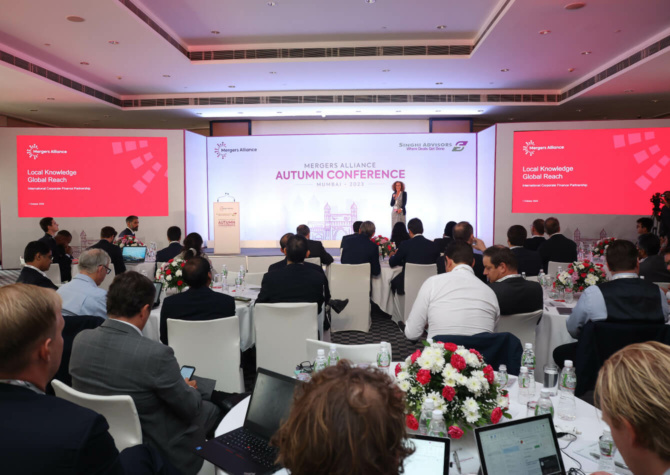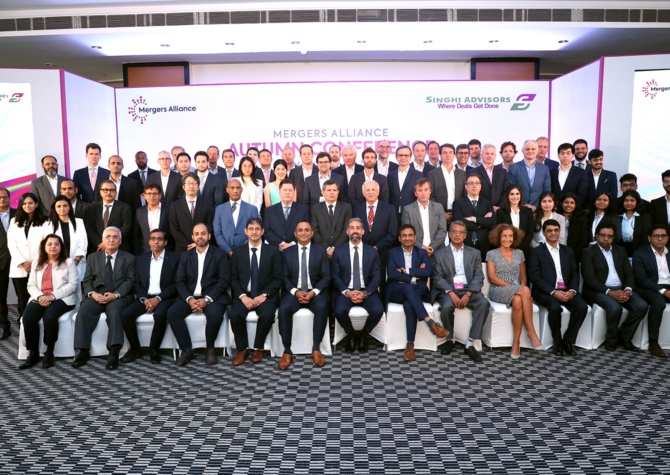The healthcare companies are expected to collaborate across verticals to provide value-based healthcare based on the go to patient approach and adopt cloud-based electronic health records, virtual consultation and tele-medicine channels in expanding emerging markets.
Mahesh Singhi, Founder & Managing Director, Singhi Advisors shares his insights on ‘Healthcare M&A outlook
As the healthcare sector is adapting to the new normal in the post-Covid-19 world, the disruptions due to the pandemic scenario are impacting the merger and acquisition narrative in the sector as well. As the approach to healthcare is fast evolving from Curative to Preventive, companies in the pharmaceutical and diagnostic segments are going back to the drawing board in reinitiating their strategies from being expansionist to attaining self-sufficiency by remaining invested in the entire value chain through backward and forward integration or stitching strategic partnership to ensure uninterrupted supply line in the changing world order.
With the new phenomena of being local global, companies will try to protect their global supply chain and critical supply inputs even while strengthening their front-end delivery channels in order to build a dependable business model. Companies will also work towards insulating themselves from other pandemic like situations or disruption as a result of geo political realignment, ensuring uninterrupted supply, self-dependence and continued market penetration through need-based partnerships or mergers and acquisitions.
Market scenario and growth drivers:
Irrespective of the prevailing scenario, the healthcare sector in India is expected to have a three-fold increase, growing to approximately $375 billion in 2022 from the $110 billion in 2016 and an estimated $200 billion currently. Healthcare sector is the 4th largest job creator – expected to generate 40 million jobs by 2022 and 1.1 million registered medical practitioners in the country. Growing at a CAGR of approximately 18%, the healthcare sector of the country is expected to be among the top three markets in the world in terms of growth of 2022. As far as the global healthcare market is concerned, it is expected to grow to about $12 trillion by 2022 with a CAGR of about 9% driven by growth in the Asia pacific and African regions, both expected to register growth rates of over13%.
The elderly population, growing life expectancy, sedentary lifestyle, strong economic growth in emerging markets, health insurance reforms and home care/monitoring and preventive healthcare are some of the key drivers for growth in the sector. Going forward, the healthcare companies are expected to collaborate across verticals to provide value-based healthcare based on the go to patient approach and adopt cloud-based electronic health records, virtual consultation and tele-medicine channels in expanding emerging markets. The sector will also witness tremendous growth driven by new trends in the healthcare sector like home healthcare, managed healthcare, AI, expanded use of biosimilars and obviously preventive healthcare instead of curative healthcare.
Pharmaceutical sector M&A – driven by risk sensitivities and self-reliance:
Pharmaceutical companies in India have been excessively relying on China for active pharmaceutical ingredients (API) or bulk drugs and key starting materials (KSMs). Approximately 68% of the API imports to India come from China. However, as the Covid-19 disrupted the supply chain, the companies have started exploring ways to move the supply chain out of China to get rid of geographical vulnerability.
The supply chain disruptions hurt the Indian pharmaceutical companies the most because India is the world’s largest exporter of generic formulation and API is the key ingredient to develop generic formulation. As a result, pharmaceutical companies hope to insulate their supply chains from such shock in future by becoming self-dependent. The intent also goes well with the idea of a self-reliant India promoted by the government. However, to reduce dependence on China and become self-sufficient in the API space, the companies need government support. The government has also risen to the occasion by approving a Rs.3000 crore fund to develop bulk drug parks and announcing a product linked incentive (PLI) scheme for promoting domestic manufacturing of important KSM and APIs. The scenario will not pave the way for domestic pharmaceutical companies to enter the API space but also encourage global companies to acquire pharmaceutical companies in India. Formulation companies in India are now getting into the API segment to facilitate backward integration of the supply chain. Companies in other countries are also exploring options to reduce their dependence on China and are looking at India as an alternative destination. So, going forward, the pharmaceutical sector is set to witness heightened M&A activities especially in the API space.
Moreover, banking on the wave of de-risking supply chains, a lot of PE investors – sitting on the pile of dry powder – are also looking at pharma and API space for investment opportunities. Similar PE investments have already started taking place such as Carlyle picking up 20% stake in Piramal Pharma, KKR acquiring 54% stake in JB Chemicals & Pharmaceuticals and Carlyle picking up 74% stake in SeQuent Scientific and Advent acquiring controlling stake in another API company-RA Pharmachem. Many more deals are already in the pipelines.
Diagnostics services – market consolidation through acquisition:
The $9 billion diagnostic services industry of the country is quite fragmented. As per an estimate, almost 50% of the market share is held by standalone, regional or mon-and-pop labs whereas organised players take up almost 35% share. The rest 15% is controlled by hospital-backed diagnostic labs. The organized segment is dominated by four diagnostic chains and those chains are altering the market dynamics by acquiring the local labs. As the urban markers have reached the saturation point, the organised are left with no other option but to penetrate into the tier-1, 2 and 3 cities by acquiring local players. Metropolis Healthcare acquiring Sudharma Metropolis Health Services in Kerala and Sanket Metropolis Health Services in Gujarat is a prime example of that trend. The diagnostics chains that are predominantly following hub-and-spoke models while expanding their markets, will gradually consolidate the market in their favour. The consolidation is also being driven by the fact that local diagnostic players have quite limited investment bandwidth to buy technologically advanced diagnostic equipment and reagents. So, to be in the business, those are accepting merger and acquisition offers from the large chains.
On the diagnostic equipment side, large multinational players are acquiring regional diagnostic equipment manufacturers to expand their market outreach, directly targeting hospitals, local labs and diagnostic chains. Instances like US-based PerkinElmer acquiring Goa-based Tulip Diagnostics, manufacturer of in-vitro diagnostic reagents, kits and instruments or Japan-based Arkray acquiring Surat-headquartered Span Diagnostics exemplify that trend.
Going forward, diagnostics services will play a critical role in transforming the healthcare outlook from curative to preventive. As a matter of fact, diagnostics services form the foundation of more than 70% of the medical treatment decisions. So, the demand base remains stronger. Moreover, as the idea of pre-emptive healthcare is gradually taking shape in the country with more and more people opting for wellness testing over illness testing and health insurance players are offering diagnostic healthcare preventive check-ups, demand from the consumer side will further grow. Growing lifestyle disorders will also continue boosting demand for diagnostic services.
The healthcare sector will witness continued growth in M&A and strategic partnerships. With an in-depth understanding of the market indicators and trigger points, global megatrends and nuances of deal-making, healthcare players will be able to ride on the wave and evolve in a post-Covid scenario.
















